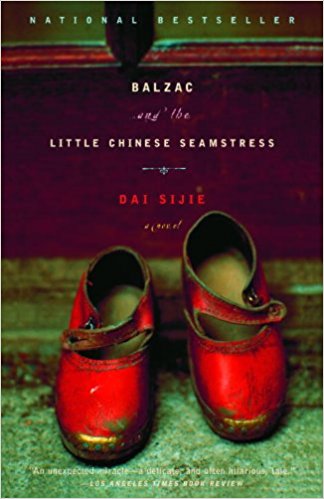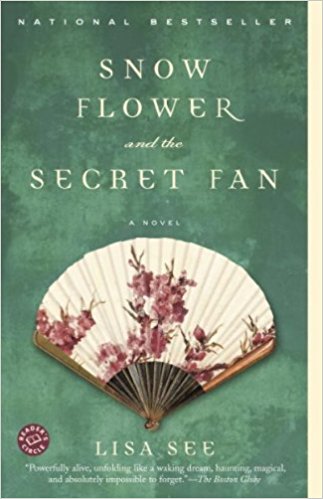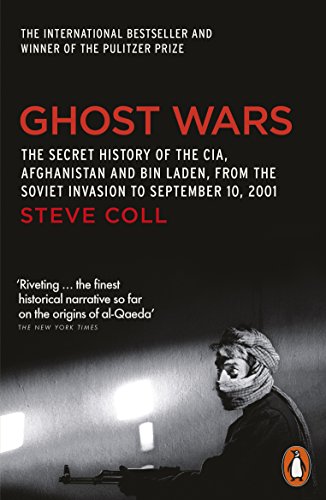E4 Lit & Global Studies – Where Should We Go?
The Options

Balzac and the Little Chinese Seamstress
Dai Sijie
Moaist China – the "Re-Education" of the Prolitariat
The novel, written by Dai Sijie, is about two teenage boys during the Chinese Cultural Revolution, Luo, described as having "a genius for storytelling", and the unnamed narrator, "a fine musician". They are assigned to re-education through labor and are sent to a mountain called "Phoenix of the Sky" near Tibet to work in the coal mines and with the rice crop, because their doctor parents have been declared enemies of the state by the communist government. The two boys fall in love with the Little Seamstress, the daughter of the local tailor and "the region's reigning beauty"
Review
Topics covered in the book–to do with the Cultural Revolution–have been elaborated on and reviewed. Dai Sijie, as "an entertaining recorder of China's ‘ten lost years’," addresses the Cultural Revolution. It is seen by some as "a wonderfully human tale" and relatable. The ending of the novel has received some positive attention. The ending has a "smart surprising bite" says a Library Journal article. In Publishers Weekly, the conclusion is described as "unexpected, droll, and poignant". The story itself is seen as unprecedented, "not another grim... tale of forced labor."[6] Also popular, it has been described as a "cult novel." and was a bestseller in France in the year 2000.”[8] However, there have been negative reviews. Brooke Allen of The New York Times Book Review states that the novel is "worthwhile, but unsatisfactory" and that the epithets for most of the characters "work against the material's power." In addition, the novel has received complaints from Chinese government officials in its portrayal of the Cultural Revolution.

Snowflower and the Secret Fan
Ming Quing Period in China (early 19th century) – Footbinding
In rural Hunan province, a county in China, Lily and her friend Snow Flower are a laotong pair whose sisterly relationship is far stronger and closer than a husband and wife's. Lily's aunt describes a laotong match this way: "'A laotong relationship is made by choice for the purpose of emotional companionship and eternal fidelity. A marriage is not made by choice and has only one purpose — to have sons.
The two girls experience the painful process of foot binding at the same time. Foot-binding was the tradition of binding a young daughter's feet by wrapping cloth around their feet tightly and forcing them to walk until their bones broke and were easier to mold and change, then tightening the bindings as time progressed. The ideal foot (called Golden Lotus) was about 7 cm (approximately 3 inches) in length. To understand this, the book draws the parallel: "Men in China feel about women's feet as men in west do about a woman's legs."
Review
Snow Flower and Lily stepped out of the pages of this book and into my heart. See created an entire lifetime of a woman's experience in ancient Asia and beautifully crafted her character in a way that made Lily's climb from oppression to honor realistically come to life for me, a large-boned, large-footed Caucasian with "feet that flap like fish." The story explores Lily's relationship with her matched friend Snow Flower from the time they were small girls through their feet binding years, their marriages and child bearing times, to misunderstandings and the bitter fruits of regret. Through See's pen, the reader steps into a world far removed from the Western world of today. It is very well researched and craftily written to reveal a history long hidden from Western eyes. I would recommend it for 16 and older. There were some themes explored that were uncomfortable for me, including physical abuse, customs such as foot binding and oppression of women, along with violence of nature and of war, but it was penned through the first person view of Lily's quill in such a way as to not be sensationalized but simply a representation of the lives of women in this place in historical remote China.

Kaffir Boy
Mark Mathabane
Apartheid South Africa – Alexandra (1960's - 70's)
Mark Mathabane's 1986 autobiography about life under the South African apartheid regime. It focuses on the brutality of the apartheid system and how he escaped from it, and from the township Alexandra, to become a well-known tennis player. He also depicted how the young black children dealt with racism and stereotypes. By embracing education he is able to rise out of despair and destitution and make something of himself.
Mathabane joins the high school tennis team and begins to play in tournaments, unofficially sponsored by Wilfred Horn, owner of the Tennis Ranch. It is technically illegal for Mark to play there, but the law is ignored and he becomes comfortable with whites. Eventually renowned tennis player Stan Smith takes Mathabane under his wing when the two meet at a tournament. Stan pays for Mathabane to compete in tournaments and talks to his coach at the University of Southern California about Mathabane attending college in the states.
Review
Kaffir Boy does for apartheid-era South Africa what Richard Wright's Black Boy did for the segregated American South. In stark prose, Mathabane describes his life growing up in a nonwhite ghetto outside Johannesburg--and how he escaped its horrors. Hard work and faith in education played key roles, and Mathabane eventually won a tennis scholarship to an American university. This is not, needless to say, an opportunity afforded to many of the poor blacks who make up most of South Africa's population. And yet Mathabane reveals their troubled world on these pages in a way that only someone who has lived this life can.

Ghost Wars: The Secret History of the CIA, Afghanistan, and Bin Laden, from the Soviet Invasion to September 10, 2001
Steve Coll
Excerpts: Focusing on the Afghanistan Conundrum
The book provides an in-depth account of Central Intelligence Agency activity in Afghanistan from the time of the Soviet Invasion to the aftermath of attacks on the World Trade Center and the Pentagon. Particularly taken note of by Coll is the interplay between the CIA and its counterpart in Pakistan, Inter-Services Intelligence, which utilized CIA and Saudi Arabian funding to build militant Mujahideen training camps along the Pakistan-Afghanistan border in an effort to create radicalized, militant fighters sourced from many Arab countries to attack the Soviet occupation. Invariably, as Coll shows, this decision would have long-lasting effects on the region.
Other Excerpts from text include: Three Cups of Tea, Kite Runner, A Thousand Splendid Suns, I Am Malala, and Not God But God
Review
Coll offers revealing details of the CIA's involvement in the evolution of the Taliban and Al Qaeda in the years before the September 11 attacks. From the beginning, Coll shows how the CIA's on-again, off-again engagement with Afghanistan after the end of the Soviet war left officials at Langley with inadequate resources and intelligence to appreciate the emerging power of the Taliban. He also demonstrates how Afghanistan became a deadly playing field for international politics where Soviet, Pakistani, and U.S. agents armed and trained a succession of warring factions. At the same time, the book, though opinionated, is not solely a critique of the agency. Coll balances accounts of CIA failures with the success stories, like the capture of Mir Amal Kasi. Coll, managing editor for the Washington Post, covered Afghanistan from 1989 to 1992



